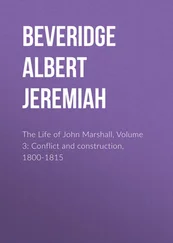Combinatorial creativity is caused by the use of established concepts like words or phrases in a new, unfamiliar way (Boden 2001: 96). It draws on entrenched items, like a parent’s “ Juice gone ” once there is no more juice to drink or the praise of “ flowers pretty ” or “ Janie pretty ” to express that something is pleasant to look at (Tomasello 2005: 95). Through analogy, a child might then produce creative solutions, such as cookies gone , to express that, in analogy to the juice, there are no cookies to be seen, or bird pretty , to point out a particularly interesting bird. The resulting schemata are also called pivot schemes , since items such as gone and pretty link the concepts like a pivot (Braine 1963). The link itself, however, is created through a creative combination of familiar items. It is important to note at this point that a creative solution does not necessarily have to be a generally accepted way of phrasing nor does it imply that the aspect of novelty needs to be new to everyone. What is important here is that the child created an utterance which s/he had never used before by combining items s/he is familiar with, which makes most creative processes at the early stages of first language acquisition a case of “mini c” creativity. The principles, however, remain the same for all creative levels, up to the masterpieces which are generally assigned as eminent creative work or “big C” creativity. Another aspect Boden points out is that not everyone dares to be combinatorially creative to the same extent. “That [kind of] mental flexibility can be inhibited by lack of self-confidence, as well as by having a sparse collection of ideas in the first place.” (Boden 2001: 96). Linking creative thinking with an individual’s character traits, it follows that there are not only different levels of creativity but also a certain predisposition. Furthermore, a collection of ideas and concepts grows through experience, thus, in the case of linguistic creativity it follows that the more creative language an individual uses, the more s/he knows about language in the first place. Therefore, linguistic creativity could be fostered through exposure to language, like reading, writing or communication in general.
Exploratory creativity , on the other hand, is produced within a concept or schema. Here the creative aspect is not formed through the combination of two established items but rather within the perimeters of a system (Boden 2001: 96–97). In language acquisition, morphological rules, such as {-ed} for past tense marking or slots within a semi-fixed schema, like [ pretty +N], can be subject to exploratory creativity. The limits are tested through extensive use of these patterns. which then might lead to over-regularisation (Bybee/Slobin 2007, Bybee 1995: 447–453) or language play (Crystal 1998: 159–182). Children, for example, form analogies like walked , played and goed , but Bybee and Modor (1983) observe that also highly frequent verbs which form a so-called irregular past tense can be used as the prototype of an analogy, if the respective test item is similar in form yet less frequent or unknown to the test taker. Forms like pretty man would also fall into the category of exploratory creativity . While a child would most likely soon substitute this phrase for the more likely version of handsome man or be corrected by a parent or teacher, the examples above show that, if used by a seemingly more competent source, like an adult native speaker or even an author, human cognition falls back on the process of intention reading, assuming that there is some purpose behind this choice of words.
In comparison to combinatorial creativity, transformational creativity affects not just single items or concepts, but rather the whole conceptualisation, for example of a schema (Boden 2001: 97). While it could be argued that the use of pretty doll , pretty bird or pretty woman are all analogies based on pretty girl , schematization might later lead to the conclusion that all have one part in common and hence share the same pattern of [ pretty +N]. This might shift the perception of this sequence from one item to a semi-lexicalised schema. Similar cases would be “ cherry gone ” into [NP is/are gone ] or “ more jelly ” into [ I want more N] (Tomasello 1992: 288–292). Like combinatorial and exploratory creativity, transformational creativity is based on analogy and entrenchment but the result is a change in conceptualization rather than a novel utterance.
The last paragraphs have argued that creative processes are an essential part of language. Furthermore, it also seems as though the importance of creative language in linguistic research is one of the very few issues that even the two main branches of linguistic research, generativists and cognitivists, can agree on, or as Goldberg admits: “Constructional approaches share with mainstream generative grammar the goal of accounting for the creative potential of language.” (Goldberg 2006: 22). Chapter 4 will, therefore, provide a more detailed discussion of creativity with respect to these different branches of cognitive linguistics (> 4) and thus will try to bring together thoughts on collocation, creativity and language acquisition in order to suggest a model for the cognitive representation of collocations.
4 Creating Linguistic Creativity
What makes a theory that allows constructions to exist a “construction-based theory” is the idea that the network of constructions captures our grammatical knowledge of language in toto, i.e. it’s constructions all the way down.
(Goldberg 2006: 18)
The last chapter has shown that creativity is a basic faculty of human cognition (> 3.2). At the same time, creative alternations of language seem to be part of every aspect of language, not just poetic works of art, but also everyday conversation (Carter 2004, Crystal 1998). Creativity is at work in any aspect of language, and even established sequences like collocations show not only a certain degree of flexibility but creative alternations as well. As with most creative innovation, new items gradually become familiar. In the fields of lexicology and grammatical structures, this is already quite an established phenomenon. A word like gay , for example, simply meant very generally being ‘happy and full of fun’ (OALD 7: gay ). However, its creative, extended use to refer to ‘homosexual’ soon became so established that it could now be regarded as its only reading. Not just single words but lexical sequences or phrases too can acquire a new or additional function, like the frequently quoted going to , which used to refer to a literal change of place, yet, through creative extension, came to acquire the additional function of expressing ‘future’ (Bybee/Pagliuca 1987). Examples of creative variants or sequences which have found their way into conventional language use can be found in every aspect of language.
As in many other areas, creativity is one of the building blocks of change, which again represents one of the fundamental aspects of development and progress. Therefore, understanding collocations and their new creative alternations also contributes to any theory which seeks to provide a comprehensive framework of language. In order to do so, it is necessary to understand what linguistic change is and, even more importantly, how it is created. In linguistic research generally, two ways exist to investigate change: either through diachronic analysis of co-occurrences over time or through studies within a cognitive system like the human mind. There are several reasons why this study will focus on change from a cognitive point of view, analysing factors of change and creativity within the human mind within an individual’s lifecycle: First, the process of language acquisition, even if seen as a life-long enterprise, is confined to a relatively short time span. If creativity and change can be observed within the relatively short span of a lifetime, the results could be taken as a starting point to investigate whether this phenomenon prevails and develops or if it remains a short-lived whim. A second aspect concerns the methodological issue of a suitable database; while, thanks to large corpora, it is no longer a difficult task to find enough instances of a single word such as gay or a sequence such as going to , identifying less frequent co-occurrences of a node and its collocates throughout different periods is still challenging from a methodological point of view, since comparable data for diachronic studies – that is, samples of language from different periods in time which share the same features such as genre, context or register – is notoriously hard to find. Especially in earlier periods, preserved language data is rare. Furthermore, there are often only a few authors included who could make a sub-corpus for diachronic purposes rather biased towards an individual style. Another aspect is the potential (inter)relation between the functional-semantic change of a single lexical item, which could then again influence the combinatorial behaviour of these items. Therefore, this study will focus on the construction of creativity and change in a language acquisition context. Still, diachronic and cognitive change remain closely related, since both, as Traugott (2015) emphasises, are observable through speakers’ usage. Thus, chapter 8 will come back to the notion of change in the shape of grammaticalisation and lexicalisation and discuss their implications for this study as well as the value a concept such as constructionalisation might have for language acquisition and learning (Traugott 2015; Bergs 2012; Traugott/Trousdale 2010). For the purpose of this study, corpora, as well as selected judgement tasks and elicitation methods provide a larger database, which at the same time is more manageable in terms of context and creativity (> 5).
Читать дальше
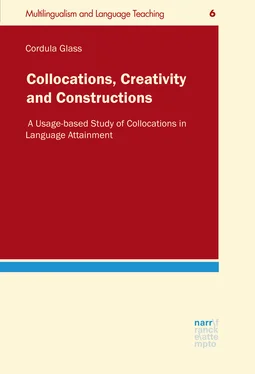

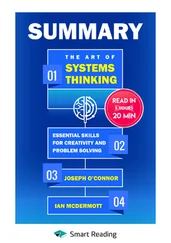

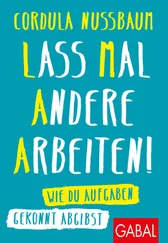

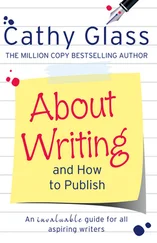

![Chade-Meng Tan - Search Inside Yourself - Increase Productivity, Creativity and Happiness [ePub edition]](/books/703803/chade-thumb.webp)


